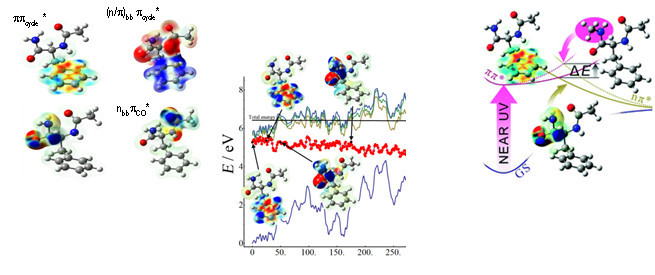Following UV absorption, many biomolecular systems are endowed with mechanisms of excited-states deactivation that ensure their photochemical stability. These (ultra)fast processes indeed provide an efficient way to dissipate the electronic energy into vibration, avoiding then structural damages which could affect their biological function. In order to determine and document the basic physical phenomena controlling the lifetime of excited states and to highlight the link between electronic dynamic and structure, we have developed a synergetic theory-experience approach combining Quantum chemistry and Spectroscopies laser. The theoretical challenge is double: i) identify in these complex systems, the critical motions responsible of the electronic relaxation and ii) treat in an accurate and balanced way the different excited states. This challenge is addressed thanks the implementation of an innovative computational multi-step and multi-level strategy. Understanding the fate of the energy absorbed is of fundamental importance and relevant to potential applications in many fields such as photochemistry, biology or material sciences.




